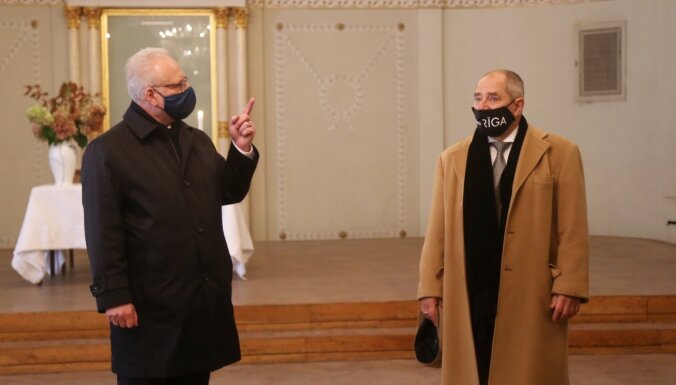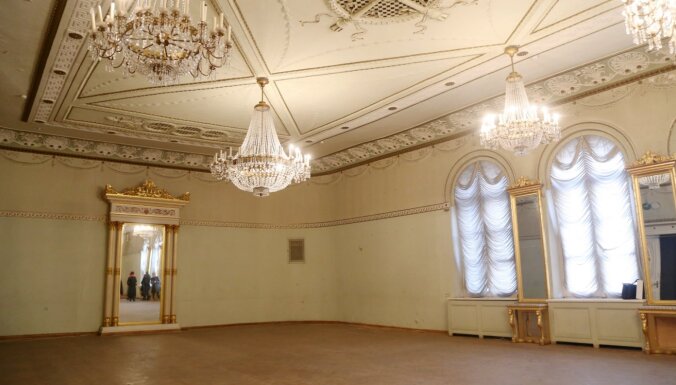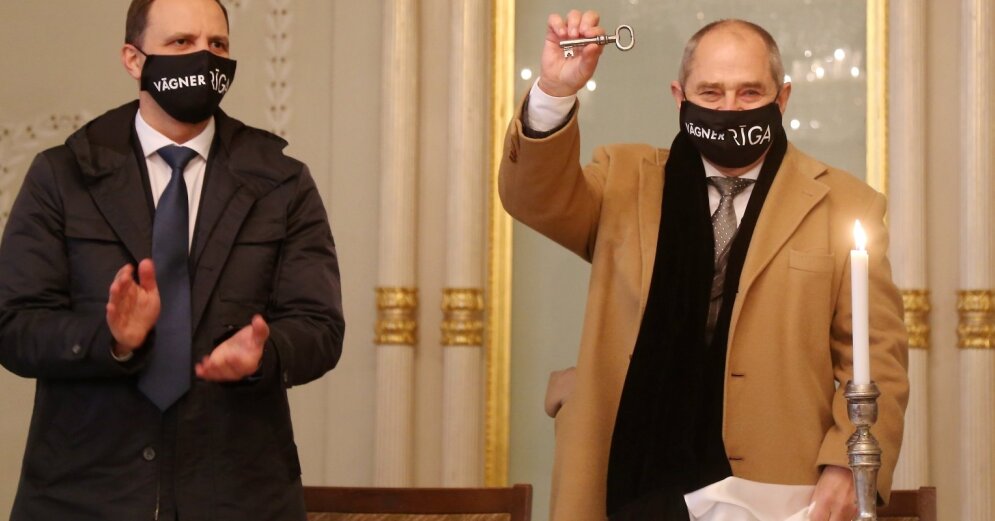YOU “State real estate“(VNĪ) on Tuesday, October 20, pursuant to the decision of the Saeima, handed over the historic Wagner House at 4 Rihards Vāgnera Street to the Rihards Wagner Society of Riga, which has committed to restore it and preserve the cultural function of the building.
–
Content will continue after the ad
Advertising
–
The symbolic handing over of the key took place in the hall, where Renārs Griškevičs, the chairman of the board of VNĪ, presented it to Māris Gailis, the chairman of the Riga Wagner Society. The President was present at the event Egils Levits and the Mayor of Riga Mārtiņš Staķis.
The building has been entrusted by the state to the Riga Richard Wagner Society, provided that it is renovated within 10 years and will continue to be a publicly accessible cultural space – it can house a museum, exhibitions, concerts and performances. If any of these conditions are not met within that time, the building will return to state ownership. The building is handed over to the association free of charge.
The patron of the project, President Egils Levits, emphasized at the ceremony: “I support this future-oriented joint Latvian-German project, as the building reflects the history of Latvia over the last two and a half centuries. pleased that soon Wagner Hall will regain its former glory, once again becoming one of the most visible centers of cultural events in Northern Europe, located on the shores of the Baltic Sea. This house will be one of the attractions in Riga for people to come here and enjoy cultural events. It would be one of the magnets, because the city’s attractiveness is created by various elements, and the cultural offer is one of them. Good luck with your project! “

–
In turn, the author of the project idea Maris Gailis “The presentation of keys is one of the most important preconditions for the preservation of this unique ensemble of buildings in the heart of Old Riga. The project” Revival of the Riga Wagner Theater – GesamtkunstWerk21 “is a way we can show our respect and appreciation for the important role of this country in the culture of the whole of Europe. “
We remind you that the building at 4 Riharda Vagnera Street, Riga, was built in 1781. The building once housed the Riga City Theater, whose chief conductor from 1837 to 1839 was the world-famous German composer Richard Wagner.
According to the representatives of the Wagner Society, the special architectural performance of this Old Riga building in the composer aroused interest in a new type of opera house – the first building of this type later appeared in Bayreuth. Its style served as the basis for Richard Wagner’s idea of merging different types of art into one joint work of art, or “Gesamtkunstwerk”. Former Bayreuth Festival director Eva Wagner-Pasquier and Maris Gailis decided to join forces in the project, and Richard Wagner’s grandson agreed to become the project’s patron.

–
The GesamtkunstWerk21 project is intended as an incubator for all types of art, both classical and contemporary, which will serve as a place where new, interdisciplinary ideas are created, developed and implemented. Eva Wagner-Pasquie has no doubt that the project will be a success: “Riga is the city where my grandfather became a European star, leaving indelible traces and creating a real revolution in European art and culture. The project will shed more light on the European significance of his work. a place in all its musical and historical splendor – returning to its artistic unifying power and giving it the features of the 21st century – we are doing a very useful job. It will certainly succeed! “
It is planned to divide the project financing responsibilities among several partners. In addition to the already attracted budget funds of Latvia and the city of Riga, a decision of the German government on allocating additional funds for this project is expected in the coming weeks. The project also has great potential to attract European Union funding.
It has already been reported that the historic Wagner House housed a concert hall named after Wagner from 1988 to 2006, but was closed to visitors due to poor technical condition. In 2006, the house was taken over from the Ministry of Culture in the possession of the Ministry of Finance and handed over to the VNI for preservation until the state decides on how this building could be further used for the implementation of the cultural function.
–


